Toxins And Your Detoxification Systems: Self Help Detox Protocols
An optimally functioning detoxification system is necessary for providing good health and preventing disease. Many diseases, including cancer, rheumatoid arthritis, lupus, Alzheimer’s, Parkinson’s, and other chronic age-related conditions, are linked to a weakened detoxification system.
A poor detox system also contributes to allergic disorders, asthma, hives, psoriasis, and eczema. It’s associated with chronic fatigue syndrome, fibromyalgia, depression, and systemic candidiasis.
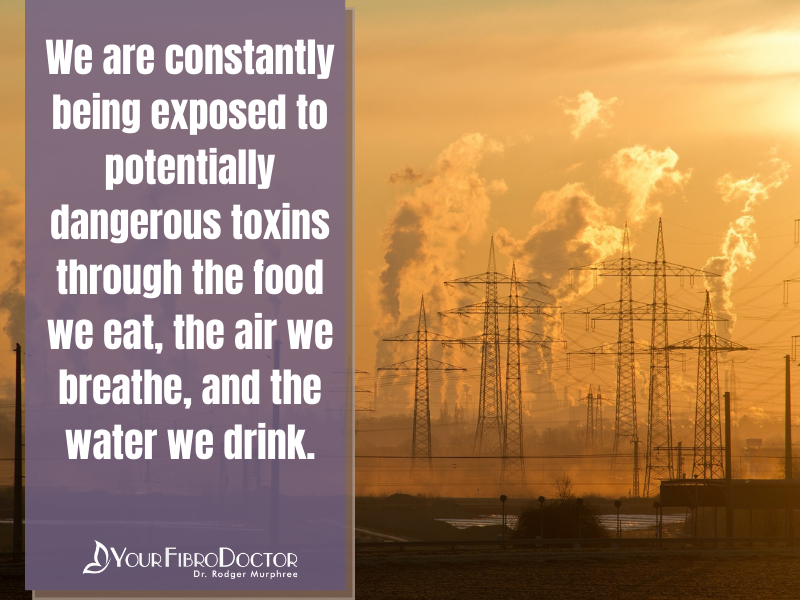
Toxins can come from lots of different places. In 2016, the World Health Organization (WHO) published a report tracking air pollution levels, and found that they had risen 8% between 2011 and 2016.
The WHO monitors the food and water supply for toxins, and has found that a large percentage of food consumed by Americans is deemed unsafe. The highest concentration of toxins are derived from glycophosate (found in the pesticide Roundup).
What About Genetically Modified Organisms (GMOs)
A GMO, or genetically modified organism, is a plant, animal, microorganism or other organism whose genetic makeup has been modified in a laboratory using genetic engineering or transgenic technology. This creates combinations of plant, animal, bacterial and virus genes that do not occur in nature or through traditional crossbreeding methods.
In most countries, organic products do not contain GMOs.
A growing body of research suggests that genetically modified organisms may be doing more harm than good. A recent study from Iowa State University found that Monsanto’s genetically modified corn may have led to the rise of pesticide-resistant “superbugs,” which could result in some farmers using even harsher pesticides on their fields.
Pesticides And Your Health
Worldwide pesticide production has increased at a rate of about 11% per year, from 0.2 million tons in the 1950s to more than five million tons in 2000. Pesticides have been associated with short- and long-term effects on human health, including elevated cancer risks and disruption of the body’s reproductive, immune, endocrine, and nervous systems,2 as well as malignant melanoma.
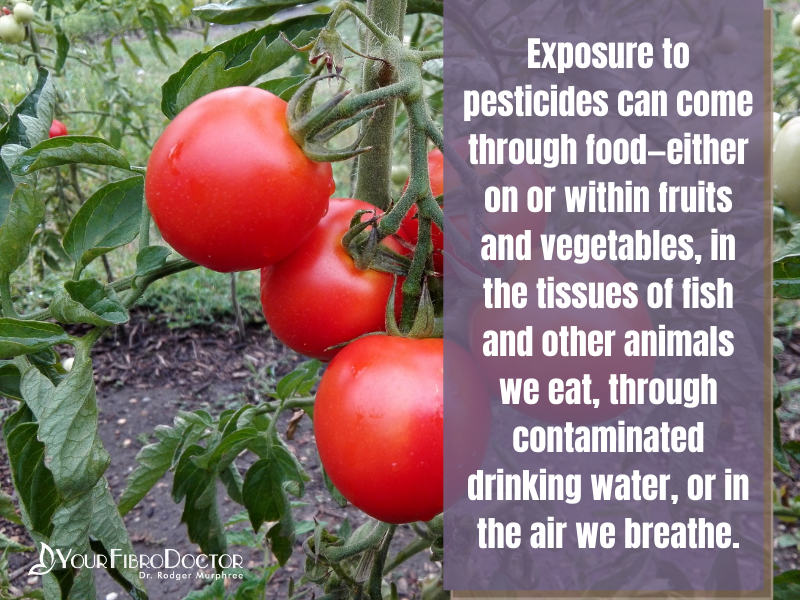
Pesticides are implicated in numerous respiratory illnesses including asthma, chronic obstructive pulmonary disease (COPD), and lung cancer.
Glycophates
The herbicide glyphosate began in the 1970s, becoming the most commercially successful and widely used herbicide of all time as of 2016.
A number of studies suggest including a 2018 study published in Food and Chemical Toxicology found that glyphosate stimulates breast cancer growth via estrogen receptors.
A formal review of glyphosate by the EPA and the Agency for Toxic Substances and Disease Registry was released in 2019, finding some statistically significant links to some cancers like non-Hodgkin’s lymphoma.
Recently Bayer AG, agreed to pay as much as $10.9 billion to settle close to 100,000 U.S. lawsuits claiming that its widely-used glyphosate weed killer Roundup caused cancer.
In addition to glyphosate, malathion, parathion, and dimethoate are known for their endocrine-disrupting potential. They have been associated with effects on the function of cholinesterase enzymes; a decrease in insulin secretion; disruption of normal cellular metabolism of proteins, carbohydrates, and fats; genotoxic effects; and effects on mitochondrial function, which can lead to cellular oxidative stress and problems with the nervous and endocrine systems.
- Children and fetuses are most vulnerable to pesticide exposure due to their less-developed immune systems and because their bodies and brains are still developing. Exposure at an early age can cause developmental delays, behavioral disorders, and motor dysfunction.
- Pregnant women are more vulnerable due to the added stress pesticides put on their already taxed organs. Plus pesticides can be passed from mother to child in the womb, as well as through breast milk. Some exposures can cause delayed effects on the nervous system, even years after the initial exposure.
- Most of us have an accumulated build-up of pesticide exposure in our bodies due to numerous years of exposure. This chemical “body burden” as it is medically known could lead to health issues such as headaches, birth defects, and added strain on weakened immune systems.
- The EPA reports that a majority of pesticide intake comes from meat, poultry, fish, eggs, and dairy products. Cows, chickens, and pigs are fed animal parts, by-products, fishmeal, and grains that are contaminated with toxic chemicals.
- Tens of millions of pounds of antibiotics are used in animal feed every year. In fact, roughly 70% of antibiotics produced in the United States are fed to livestock. US farmers use sex hormones and growth hormones to increase the amount of meat and milk the cattle produce without requiring extra feed. The hormones fed to cows cannot be broken down, even at high temperatures. They remain intact and pass directly from the animal to the consumer.
- Europe’s scientific community agrees that there is no acceptably safe level for daily intake of any of these hormones and has banned all growth hormones.
- Growth hormones in milk (rBGH or rBST) are genetically modified and have been directly linked to cancer, especially in women.
- Scientists warn that overuse of antibiotics in animal feed, like penicillin and tetracycline, will lead to an epidemic of bacteria resistance bugs.
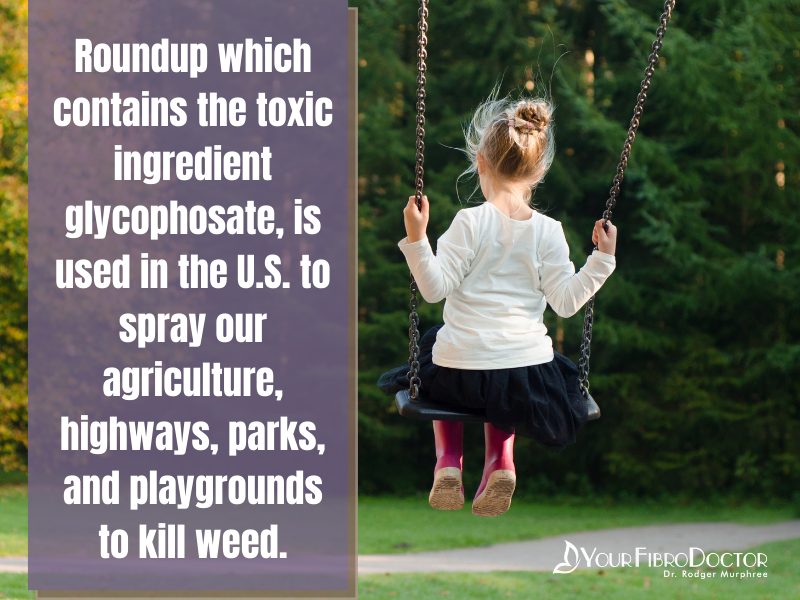
Glycophosate is heavily concentrated in all animals and fish since their water supply and the grass they eat is heavily contaminated. Livestock are fed corn and soy which cannot naturally digest.
The WHO has discovered that all animals and fish now have the highest toxic load ever noted in history. Consuming conventionally raised and fed they are highly suspectible to extremely high exposure to many heavy metals (i.e., mercury, arsenic, lead, cadmium, prions, and glycophosate which they cannot safely tolerated.
Consumption of non-organic produce, processed foods, condiment, and items rich in non-organic corn, soy, and wheat are also exposed to high levels of glycophosate, heavy metals, arsenic, lead, cadmium, and dangerous pesticides.
Glycophosate is an antibiotic which kills a person’s healthy gut microbiome. This can contribute to yeast overgrowth, bacterial overgrowth, small intestinal bacterial overgrowth, and leaky gut. It also interferes with proper absorption of essential minerals, antioxidants, and vitamins.
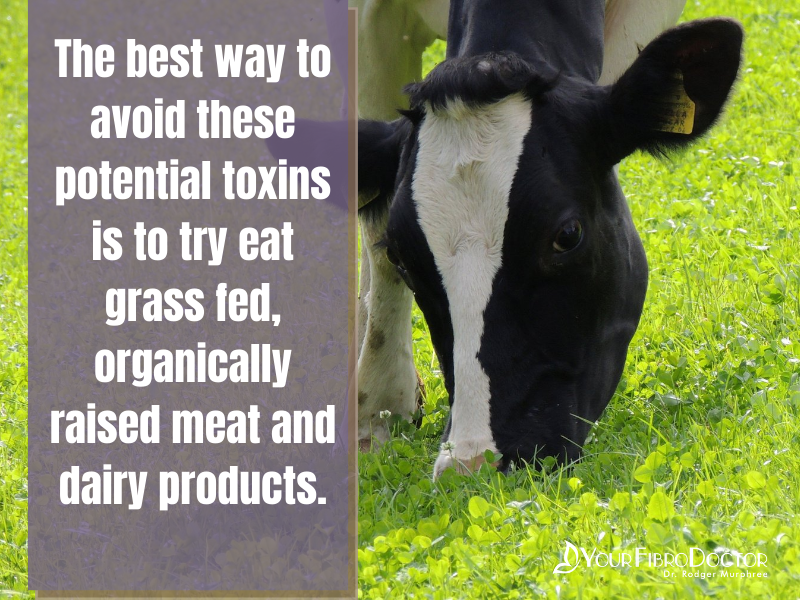
Some toxins can be absorbed through your skin. Personal care products, like shampoos, make-up, perfumes, and lotions often contain parabens, formaldehyde, and phenoxyethanol. As these products are absorbed, those toxins come into the body too.
- The Environmental Protection Agency (EPA) has 80,000 chemicals registered for daily use. Of those, only about 250 currently have testing to assess their safety.
- Although DDT was banned in 1977, it is a persistent organic pollutant. What does this mean? It can take several decades to breakdown. In the meantime, it persists in our soil, and in our bodies.
- The United States uses 18,000 pesticides and sprays 5 billion (yes, Billion) pounds of pesticides per year. Only 1% of these pesticides make it to the targeted pest which means 99% of pesticides sprayed end up somewhere else.
- The amount of pesticides used on crops in the United States doubles every 10 years. All for naught, however, because insects become immune over time and the pesticides become ineffective.
There is a long list of toxic compounds found in everyday life – from arsenic to xenoestrogens. They are found in:
- Soil and dirt we track through our home.
- “Microwavable safe” plastic containers, cling wrapped foods, and any plastic storage containers, whether they are heated or not. They do not need to melt to release toxins and contaminate food.
- Watercooler jugs and canned foods not listed as BPA free.
- Teflon and non-stick pans.
- Carpeting, particle board furniture and cabinetry, cushions, upholstery fabric and paint. These all off-gas toxins for years.
- Cleaning supplies and dry-cleaned clothes.
- Flame-retardant products.
- Air fresheners, scented candles, detergents and fabric softeners, soaps and deodorants.
- Shower water treated with chlorine.
- Non-organic produce.
- Non-organic meat and dairy products.
- Farm raised fish.
- Large fish such as tuna, swordfish, and shark.
- Cigarette smoke and tailpipe exhaust.
Thankfully, our liver works to neutralize harmful chemicals, viruses, and bacteria. It’s also first to process the nutrients delivered by the bloodstream.
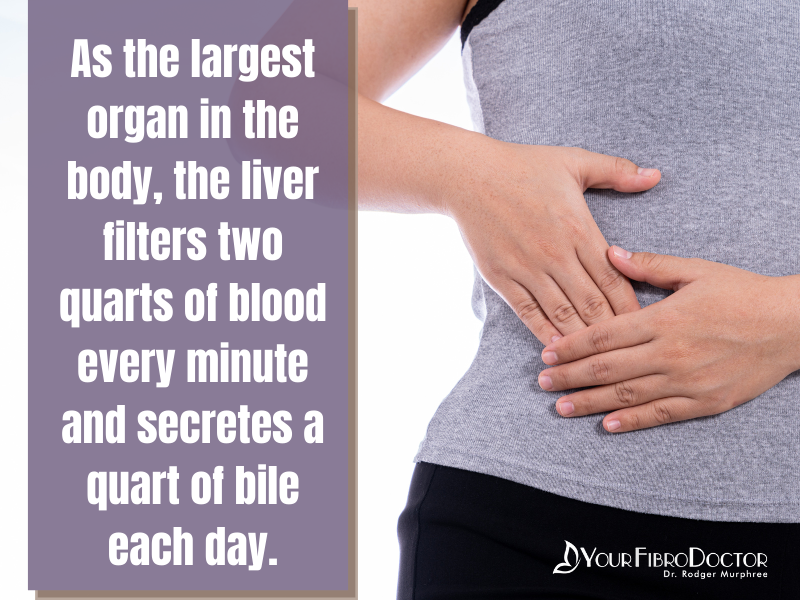
The body detoxifies itself through four major organs – intestines, liver, kidneys, and skin. The liver is the main detoxifying organ. It weighs about 3 pounds and is the second largest organ in the body, second only to skin.
The liver is also the only organ in the body that can actually regenerate itself. This is good news because the liver is under constant duress on a daily basis.
Good health depends on a healthy liver!
The liver has several important functions in the body. Here are just a few remarkable functions of the liver:
- Regulates most chemical levels in the blood
- Produces cholesterol and special proteins to help carry fats throughout the body
- Stores iron and processes hemoglobin to use its iron
- Converts harmful ammonia – a byproduct of protein metabolism – to a safer form, urea
- Regulates blood clotting
- Helps the body fight infections by producing immune cells and removing pathogens
- Stores and releases glucose to regulate blood sugar levels
- Produces bile – a product that helps break down fats for absorption as well as carry waste to be eliminated
- Processes all of the blood leaving the digestive tract
- Metabolizes carbohydrates, fats, and proteins into usable forms
- Stores many nutrients – glycogen; fatty acids; vitamins A, D, E, K and B12; iron and copper – to provide a constant supply of these essential substances to the body
- Metabolizes alcohol and drugs into their inactive metabolites
- Metabolizes hormones produced by the body’s own glands
- Protects the body from toxins
There are two main phases of liver detoxification, both are important for optimal health.
Unwanted chemicals, including prescription and nonprescription drugs, alcohol, pesticides, herbicides, and metabolic waste products are neutralized by the liver’s enzymes.
There are two enzymatic pathways, phase I and phase II.
Phase I Detoxification Enzymes are Collectively known as Cytochrome
P450. The cytochrome P450 system is made up of fifty to one hundred enzymes that attempt to neutralize toxic chemicals by transforming them into a less toxic form.
Each enzyme is specially suited to certain types of toxins. Chemicals that can’t be neutralized are changed into an intermediate form. As the phase I enzymes neutralize toxins, they spin off free radicals. If there aren’t enough antioxidants to counter these free radicals, the liver may be compromised. Consuming antioxidant fruits and vegetables and taking vitamins and minerals on a daily basis helps supply the antioxidants needed to counter unhealthy free radicals.
More About Free Radicals and Antioxidants:
Free radicals are unstable atoms or molecules with an unpaired electron in the outer ring. They fill the void by taking an electron from another molecule, which then becomes unstable, needing another electron of its own. This sets up a destructive cycle that can cause damage to our bodies inside and out.
Believe it or not, oxygen is responsible for the creation of most toxic free radicals. Just like it causes rust on a car, excessive oxygen can cause premature aging and dysfunction in the body.
Have you ever cut open an apple and then left it out awhile?
If so, you’ve witnessed free radical damage. The once white inner meat of the apple turns brown when exposed to the oxygen in the air. Sprinkling lemon juice on the apple will turn the brown back to its normal color. This is an example of an antioxidant at work.
Internal metabolic activities, including immune and detoxification processes, generate free-radical molecules. Free radicals also come from our environment and include radiation, alcohol, tobacco, smog, medications, and pesticides. Free radicals have been implicated in numerous conditions including rheumatoid arthritis, Alzheimer’s, Parkinson’s, cancer, inflammation, type 2 diabetes, and heart disease.
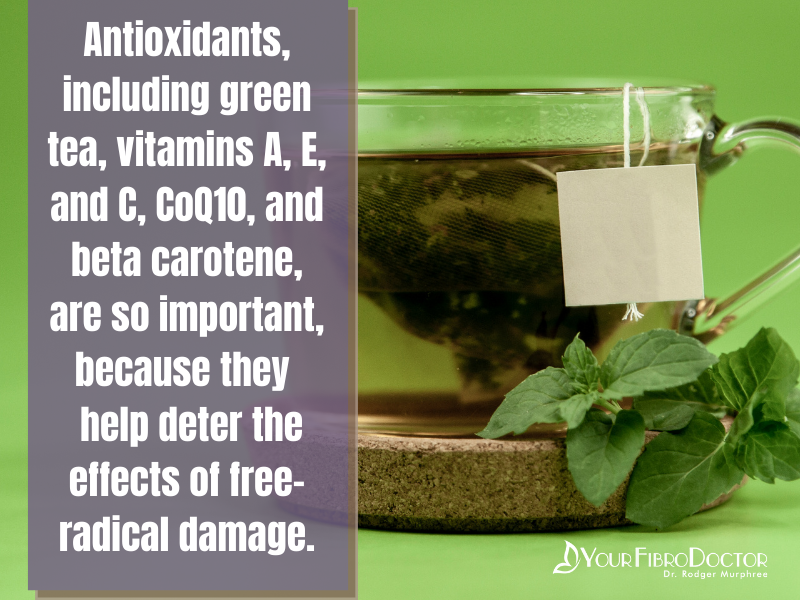
Along with the amino acids cysteine, methionine, glycine, and glutathione (tripeptide), they help deter the effects of free-radical damage.
Phase I detoxification is compromised by antihistamines, NSAIDs, azole drugs (antifungals), tranquilizers such as Valium and Klonopin, and antidepressants such as Prozac, Savella, Cymbalta, Celexa, and other SSRI’s.
If you’ve had adverse reactions to antidepressants, a common complaint from some of my patients, then you most likely have a phase I detox issue. Increasing antioxidant foods, and using specific over the counter supplements can be helpful in preventing these unwanted reactions.
Phase I is responsible for neutralizing most over-the-counter and prescription drugs, caffeine, hormones, yellow dyes, insecticides, alcohol, and antihistamines. Do you get funny reactions when you drink alcoholic beverages or take antihistamine medication? This is often a sign of a compromised phase I enzymes.
Phase II detoxification enzymes go to work on the toxins that the phase I enzymes turned into intermediate form. They do this by attaching minute chemicals to the structures. This process is called conjugation, and it neutralizes the toxins, making them more likely to be excreted through urination or defecation.
Unfortunately, many of these intermediate forms are more toxic and potentially more damaging than in their original state. So an inadequate phase II detoxification system can cause all sorts of chronic illnesses.
A person suffering from poorly functioning phase II and overactive phase I detoxification is known as a pathological detoxifier. These individuals fill up doctors’ offices on a regular basis, because they suffer from a variety of ailments that seem to never go away.
One illness is replaced by another, as the patient tries one prescription after another. Neither the doctor nor the patient realizes that a compromised detoxification system is being further aggravated by toxic prescription medications.
Phase II, responsible for neutralizing acetaminophen, nicotine, and insecticides, is composed of the following processes:
› Glutathione conjugation which requires vitamin B6 and the tripeptide (made from three amino acids) glutathione. Glutathione is a potent antioxidant created by the body and involved in several critical-for-life functions.
You can purchase over the counter reduced glutathione supplements.
› Amino-acid conjugation which requires the amino acid glycine. Low-protein diets and deficient digestive enzymes inhibit this process. Individuals with hypothyroidism, arthritis, hepatitis, and chemical sensitivities may suffer from poor amino-acid conjugation.
› Methylation requires S-adenosyl-methionine (SAMe). SAMe is synthesized from the amino acid methionine and dependent on folic acid, choline, and vitaminB12. Methylation detoxifies estrogen, testosterone, thyroid hormones, acetaminophen, and coumarin. Some individuals have genetic methylation issues (MTHFR) and require special forms of B12 and Folic acid-methylcobalamin and 5-methylfolate respectively.
› Sulfation requires the amino acids cysteine and methionine and the mineral molybdenum. Sulfation is involved in processing steroids, thyroid hormones, food additives, certain drugs, and neurotransmitters. Individuals who can’t take certain antidepressants or have reactions to certain sulfur containing foods may benefit from taking extra molybdenum, taurine, cysteine, and methionine.
› Acetylation requires acetyl-CoA and is inhibited by a deficiency in vitamin C, B2, or B5. This pathway is responsible for eliminating sulfa drugs, so individuals with sulfa allergies may benefit from extra vitamin C, B2, or B5.
› Glucuronidation requires glucoronic acid and detoxifies acetaminophen, morphine, benzoates, aspirin, and vanilla. Aspirin inhibits this process. Signs of deficiency include yellowish pigment in the eyes or skin not caused by hepatitis.
› Sulfoxidation requires molybdenum and detoxifies sulfites and garlic. You may be deficient in this enzyme if you have allergic reactions to sulfite foods, garlic, or asthma.
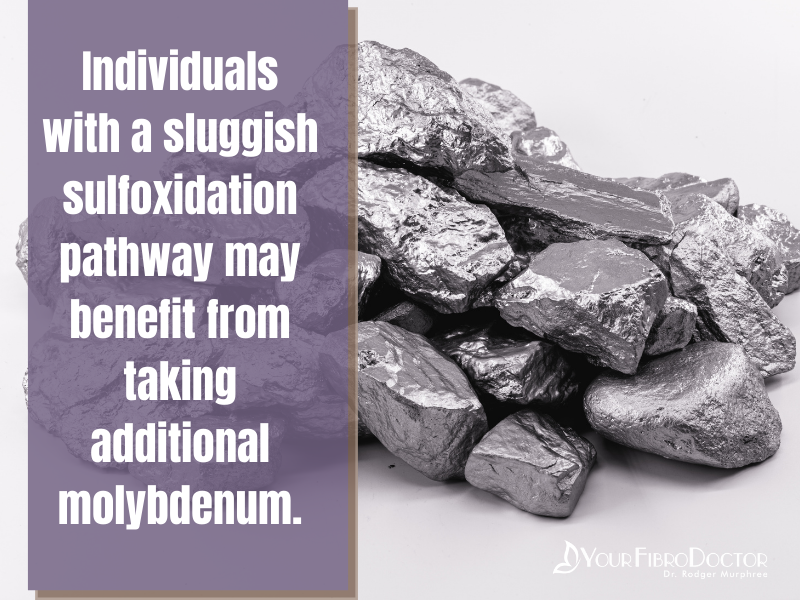
Fish oils, SAMe, broccoli, Brussels sprouts, and cabbage all stimulate phase I and phase II reactions. Choline, betaine, methionine, vitamin B6, folic acid, and vitamin B12 (altogether known as lipotrophic factors) stimulate bile production and its flow to and from the liver.
Lipotrophic factors also increase SAMe and glutathione, which in turn spare the liver free-radical damage.
Here’s what you can do:
› Avoid foods and skin, hair products that contain artificial dyes and preservatives. If the ingredients list is hard to pronounce, it’s probably even harder on your body.
Use all natural skin care products. I like Art Naturals.
› Choose organic meats. Thankfully, they are becoming more and more available at grocery stores around the country.
› Consume whole, live foods. Fruits, vegetables, and whole, unprocessed grains (unless you are gluten sensitive) are the healthiest foods to eat.
These foods are loaded with antioxidant, cancer-fighting, and immune-boosting phytonutrients.
They are easy on the digestive system and allow the body to generate more energy to fight diseases and build immunity.
› Supplement with antioxidants to combat free radicals. Include vitamins A, E, and C; the mineral selenium; and pycnogenol.
–> I recommend taking a good multivitamin/mineral formula on a daily basis.
› Enjoy foods from the Brassica family: broccoli, cabbage, and Brussels sprouts. They contain phytochemicals that stimulate phase I and phase II detoxification pathways.
› Supplement to increase glutathione.
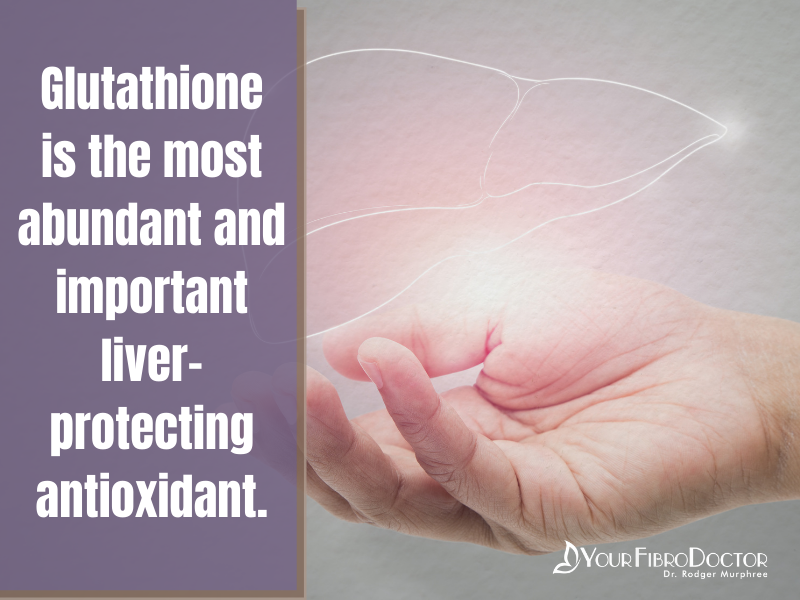
Although it is readily absorbed from fruits, vegetables, and meats, depletion may occur during high or sustained exposure to toxins. Glutathione supplements are not readily absorbable, so supplement with its building blocks instead: cysteine, methionine, and glycine. I recommend using reduced glutathione supplements for better absorption. I normally suggest my patients who want or need help with their liver and detox system us the Essential Therapeutic Liver Detox Formula.
› Supplement with silybum marianum (milk thistle). The silymarin complex, particularly the silibinin component of milk thistle, protects the liver from free-radical damage. It prevents certain toxins from entering liver cells and stimulates regeneration of damaged liver cells.
Medical use of milk thistle can be traced back more than two thousand years. Over thirty years ago, intensive research on the liver-protecting properties of milk thistle began in Germany.
Extensive research also may have led to the approval of a standardized milk thistle extract in Germany for the treatment of alcohol-induced liver disease and other diseases of the liver.
Milk thistle extract protects liver cells, both directly and indirectly.
It is able to regenerate liver cells that have been injured, prevent fibrosis or fatty liver, bind to the outside of cells and block entrance of certain toxins, and even neutralize toxins that have already penetrated the liver.
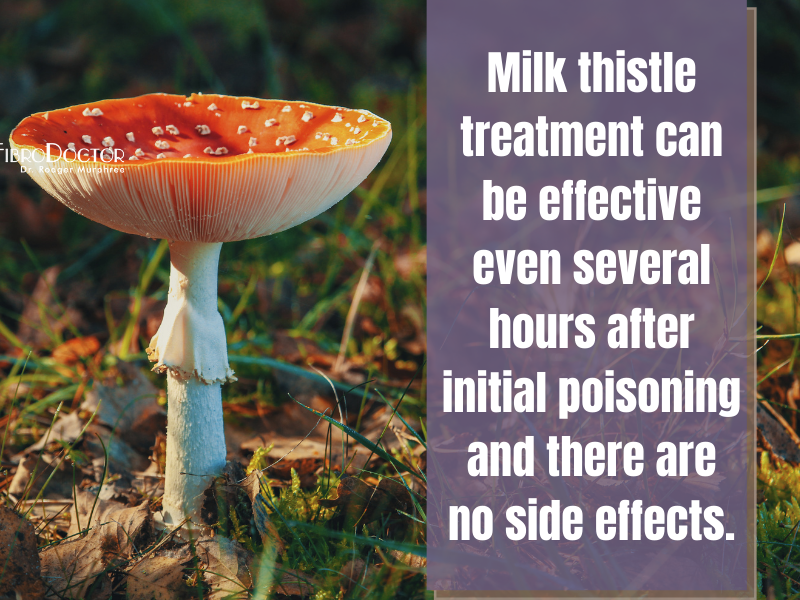
Silymarin may also prevent the damage caused by certain drugs such as acetaminophen, antidepressants, and antipsychotic, cholesterol-lowering, and anticonvulsive drugs.
One study showed that increasing the antioxidants in patients receiving psychotropic drugs reduced the production of potentially damaging free radicals in the liver.
Silymarin has been shown in animal studies to raise the glutathione levels in liver cells by as much as 50 percent. It also increases the activity of another antioxidant known as supraoxide dismutase (SOD).
Milk thistle may someday be the main treatment for hepatitis, a chronic viral infection of the liver that can lead to liver damage and, in some cases, liver failure. During a six-month treatment period in patients with chronic alcohol hepatitis, liver function test results normalized and liver enzymes improved over controls using a placebo.
› Supplement with alpha lipoic acid (ALA). This powerful antioxidant compound helps recycle glutathione. It is both fat- and water-soluble, so it works in both mediums.
Manufactured by the body in small amounts, it also needs to be obtained through the diet. It can help prevent and repair damage to liver cells and is being studied for its regenerative properties in neurological diseases, including Alzheimer’s, multiple sclerosis, Lou Gehrig’s disease, and Parkinson’s disease.
The Essential Therapeutics Liver Detox Formula contains a synergistic blend of nutrients including Milk Thistle and Alpha Lipoic Acid (ALA) to help protect and optimize the liver and detoxification systems of the body.
P.S. –> Join me for The FREE 14 Day Detox Diet Challenge October 11th through October 24th 2021.

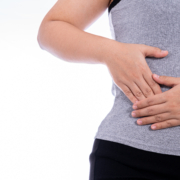

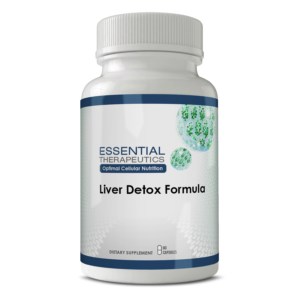
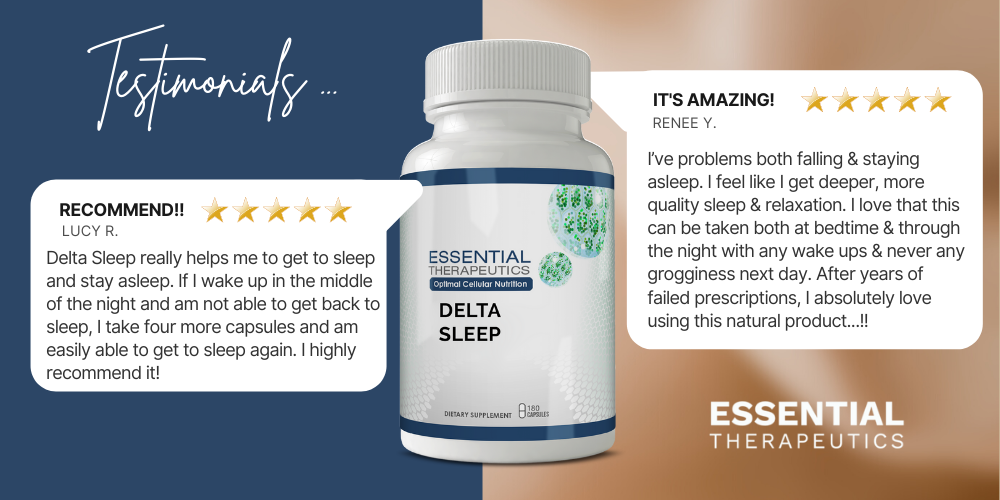


Leave a Reply
Want to join the discussion?Feel free to contribute!